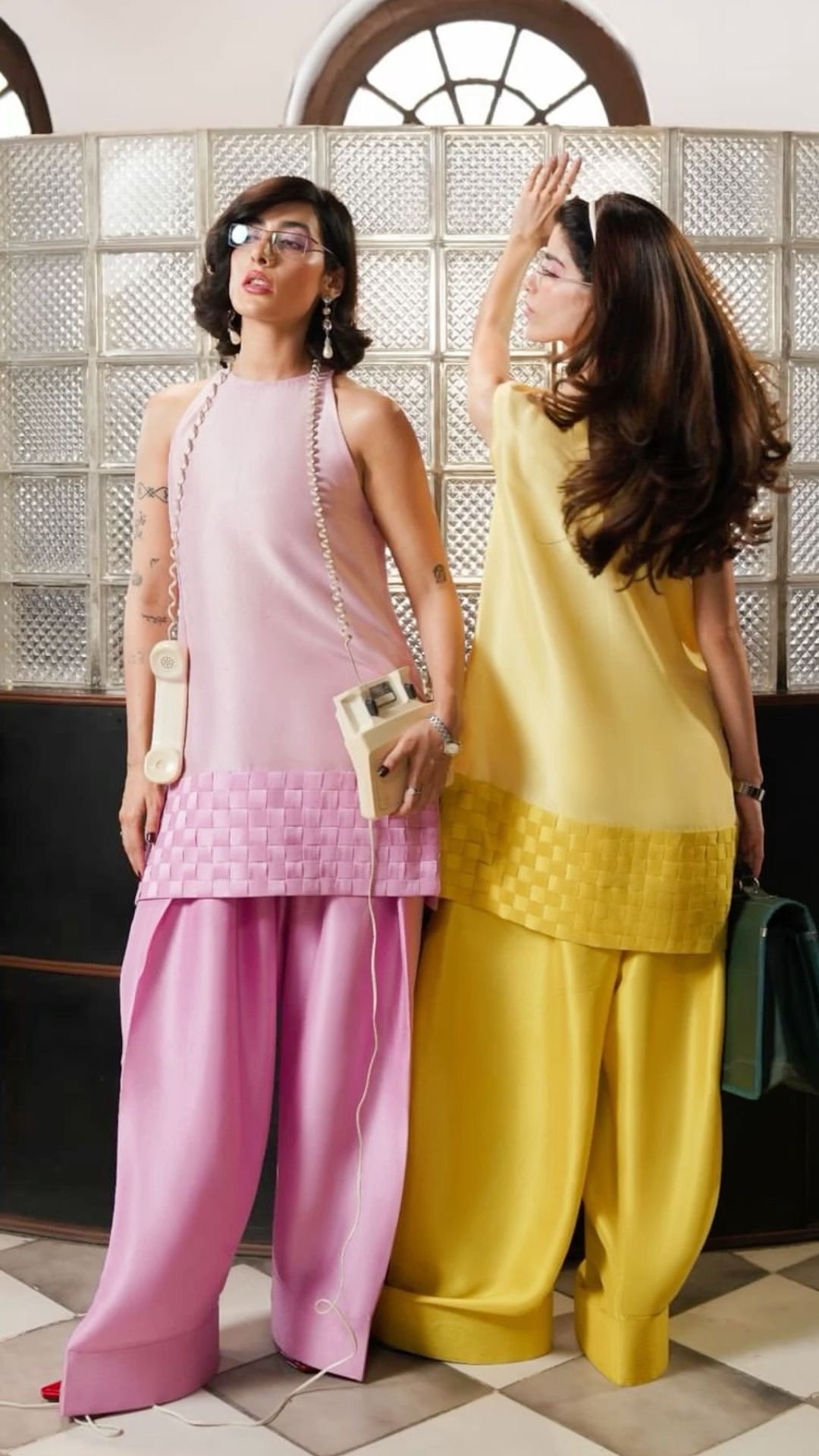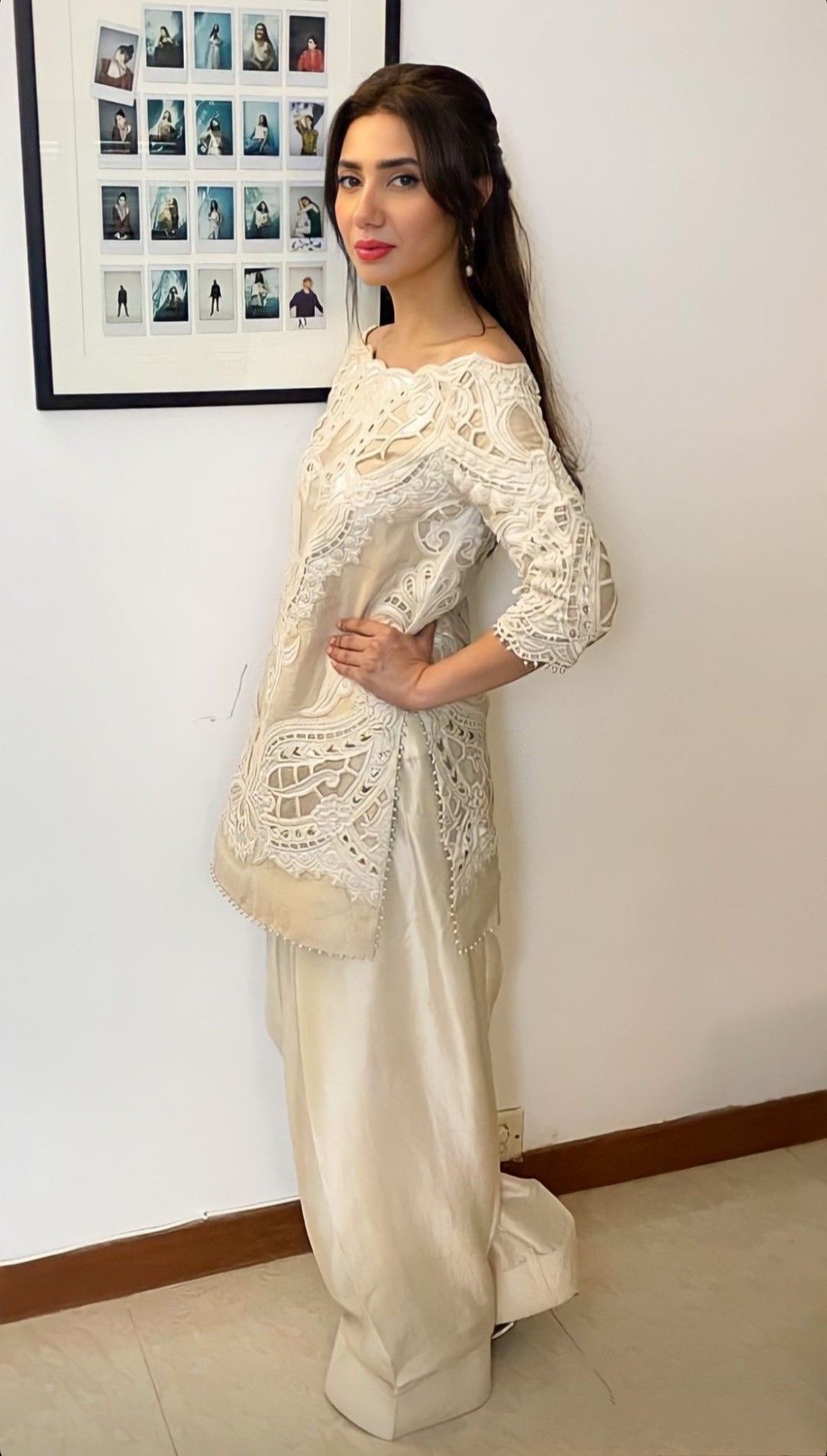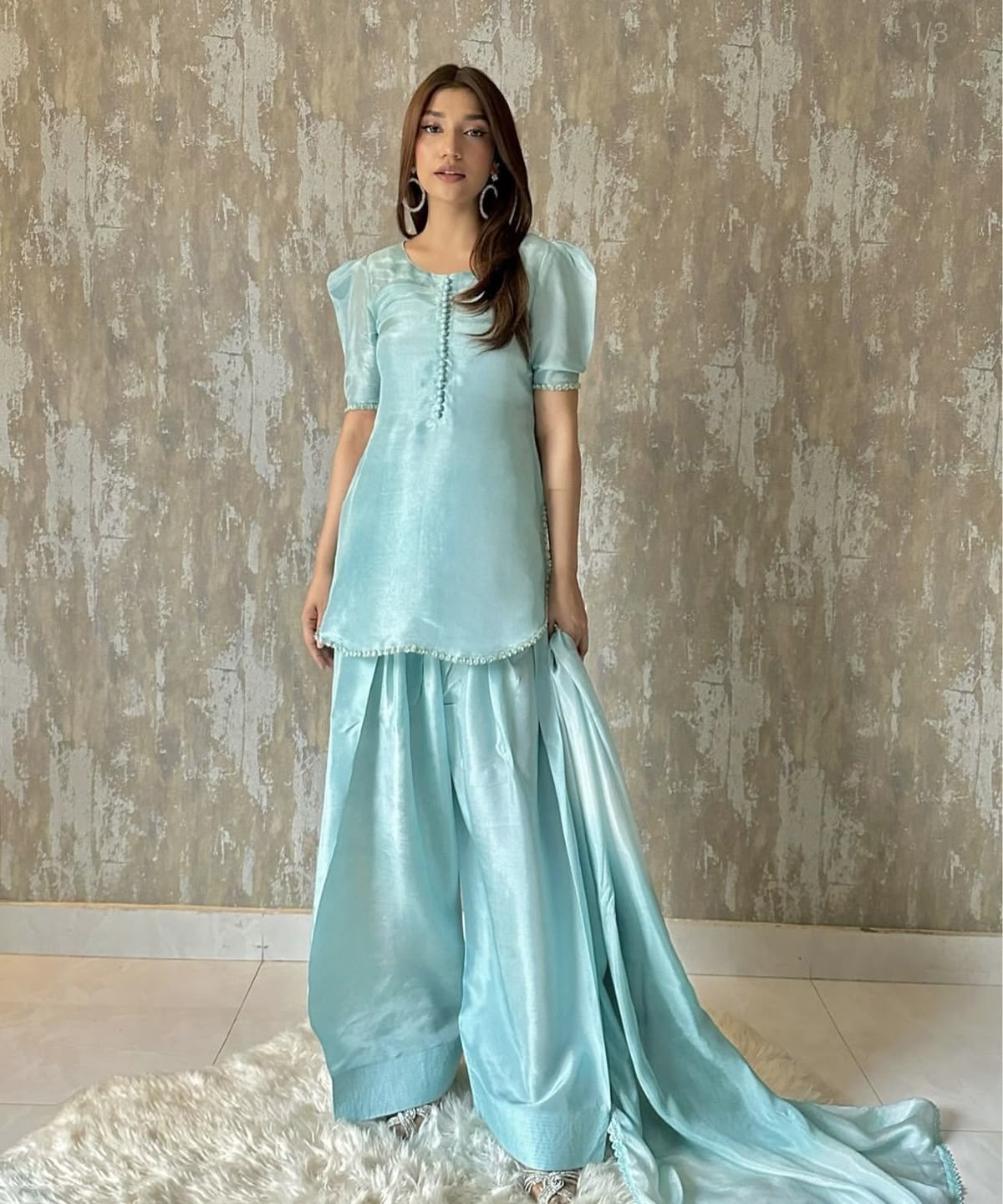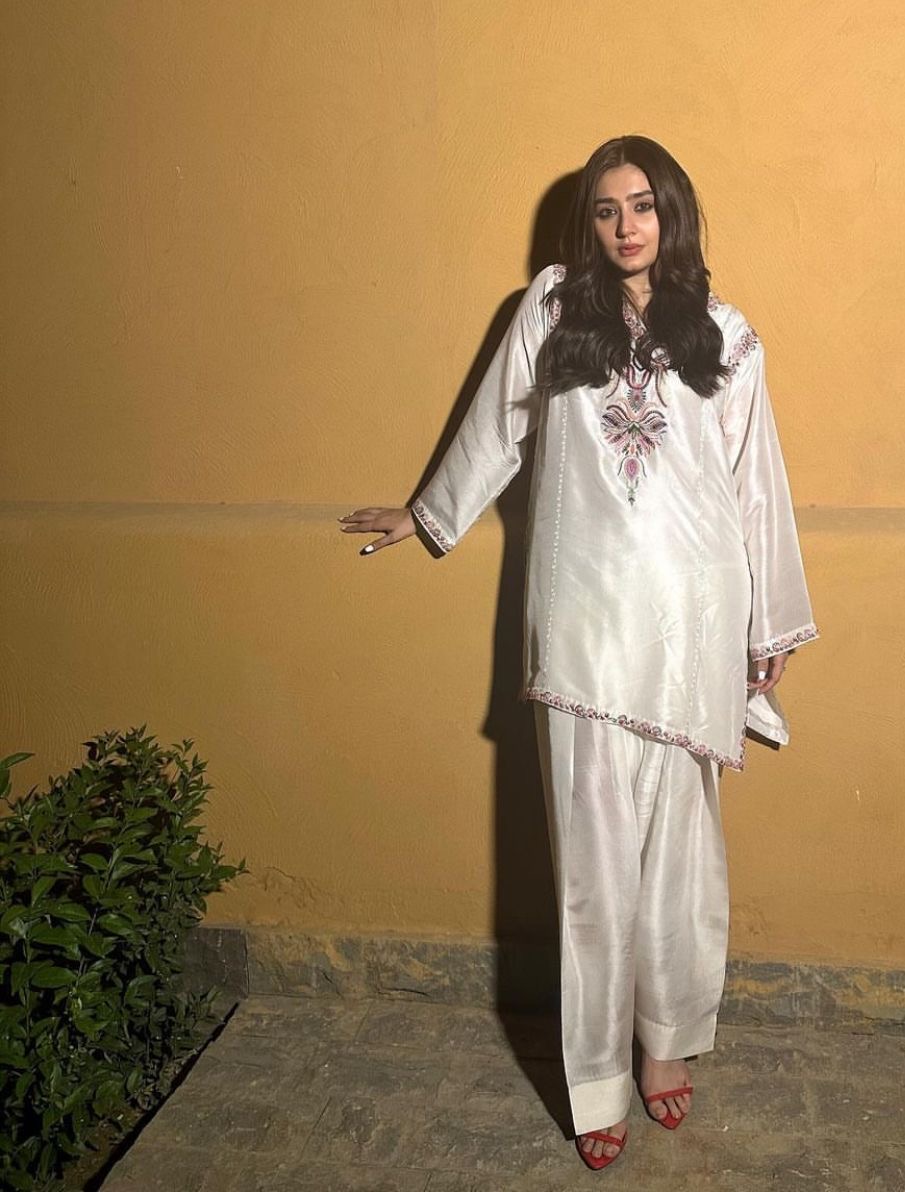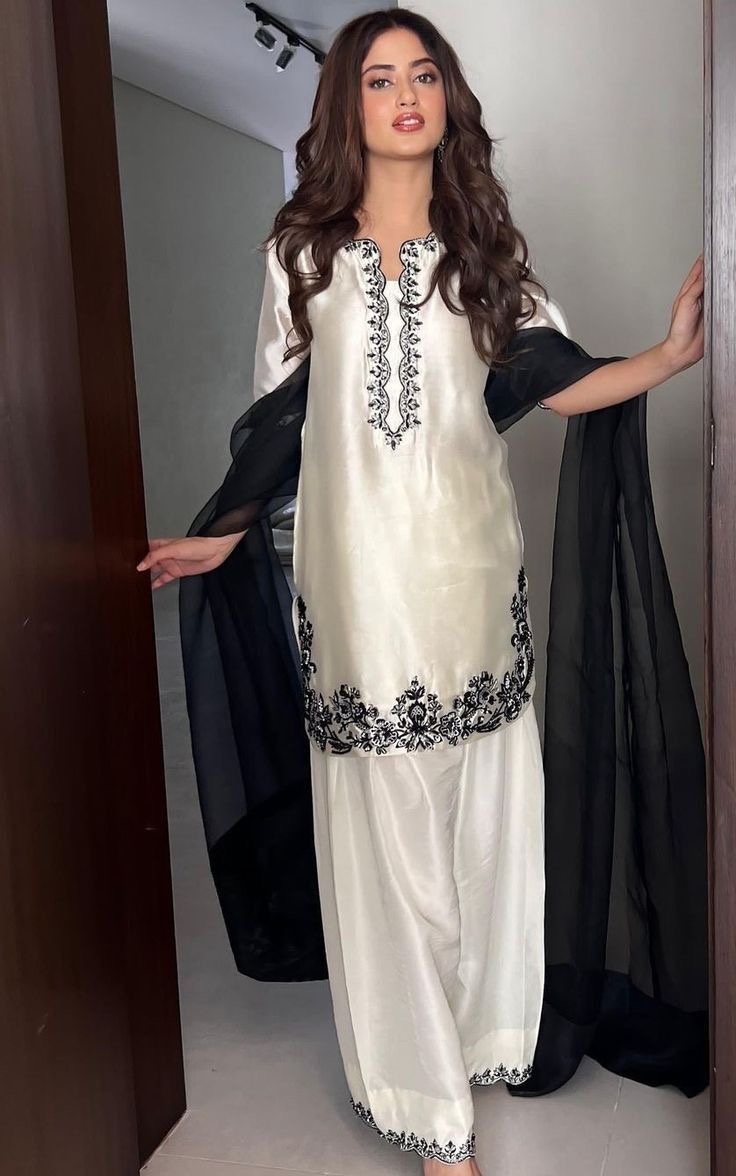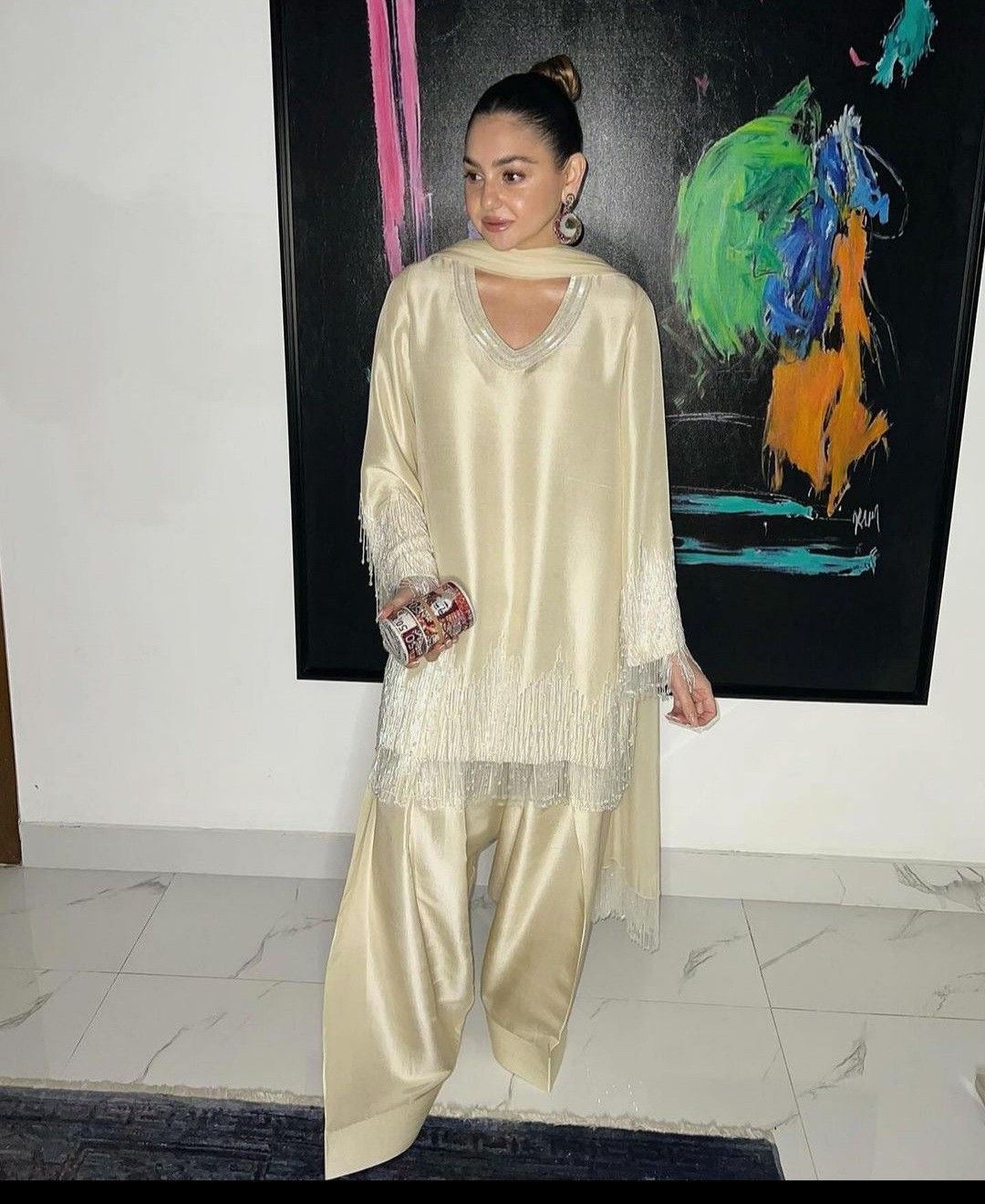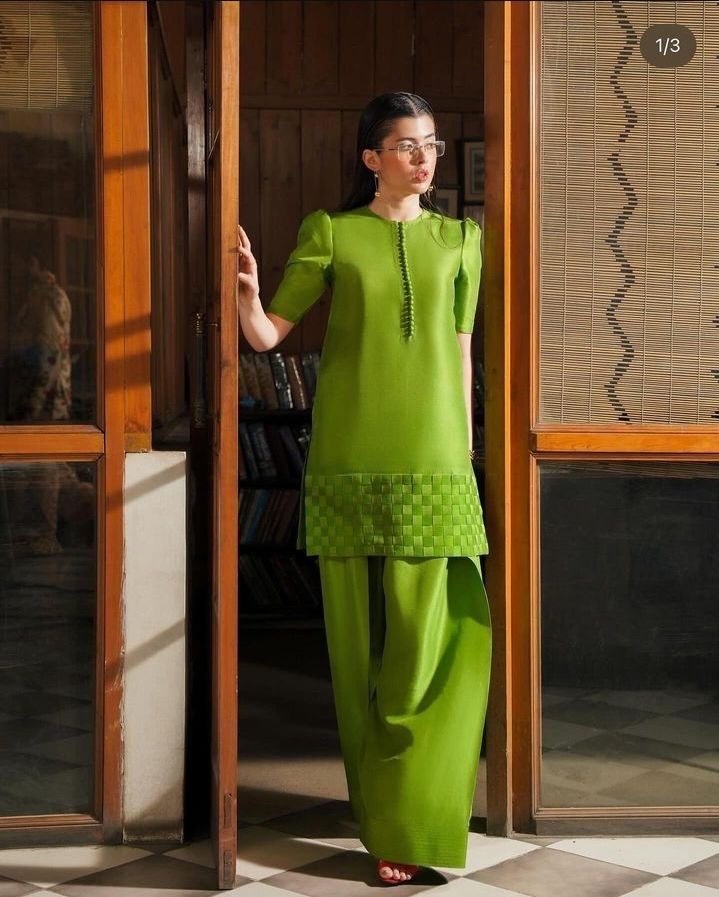![]()
Farshi shalwar, a timeless and regal fashion statement, is making a grand comeback this Eid. Originally worn by royals, this traditional ensemble features an ultra-wide, flowing shalwar that gracefully trails behind, creating a luxurious and elegant look. If you’re planning to wear a farshi shalwar this Eid, here’s everything you need to know about styling and carrying it with confidence.
1. Choosing the Right Fabric
Since farshi shalwars have a voluminous silhouette, selecting the right fabric is essential. Lightweight fabrics like chiffon, silk, and organza drape beautifully and add a touch of elegance. If you prefer a heavier look, opt for jamawar or embroidered fabrics that hold their structure well.
2. Pairing It with the Perfect Kameez
To balance the proportions, pair your farshi shalwar with a shorter kameez or an angrakha-style top. A fitted bodice with flared sleeves or intricate embroidery enhances the overall look without overwhelming the silhouette. If you want a modern twist, consider pairing it with a peplum-style top.
3. Footwear Matters
Since the farshi shalwar is floor-length, your footwear will peek out occasionally. Go for embellished khussas, classic heels, or delicate juttis that complement the outfit’s elegance. Avoid chunky shoes that can disrupt the flow of the shalwar.
4. Carrying It Gracefully
Walking in a farshi shalwar requires a little practice. To prevent tripping, hold one side slightly while walking, just like you would with a long gown. If you’re attending an event, consider draping the ends over your arm for added grace.
5. Accessorizing the Look
Keep the jewelry traditional with jhumkas, chokers, or a maang tikka for a regal touch. A delicate potli bag or an embroidered clutch completes the ensemble beautifully.
Wearing a farshi shalwar this Eid is a bold yet elegant choice. With the right styling and confidence, you’ll effortlessly exude grace and tradition. So, embrace the trend and make a stunning fashion statement this festive season!



